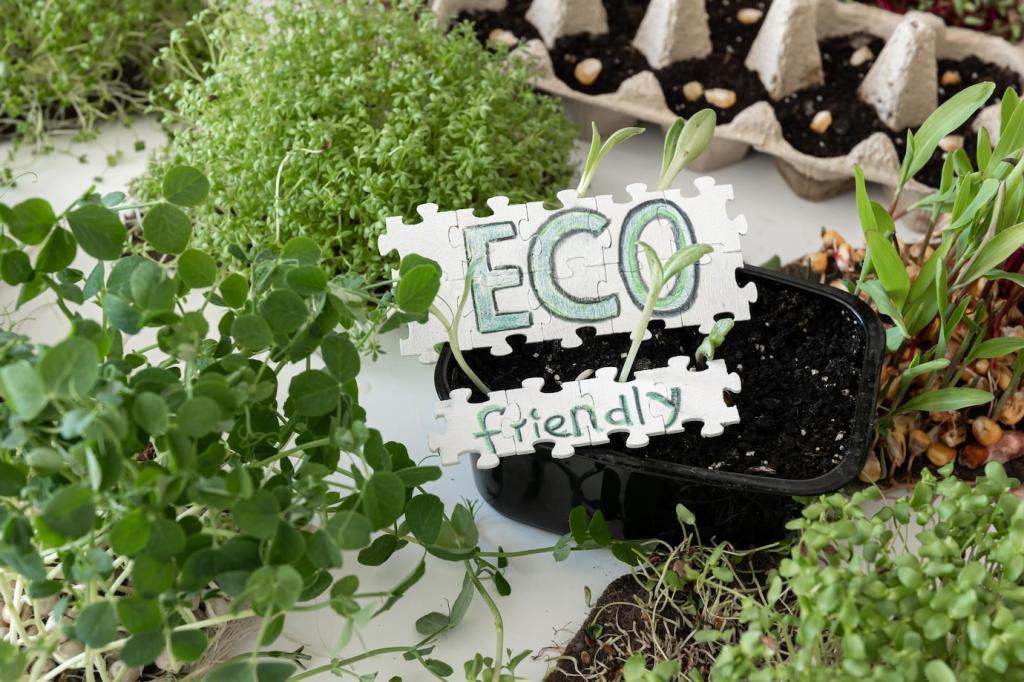Breathe Easy: Non-Toxic Furniture Deodorizing Methods

What actually causes lingering odors
Smells cling because porous fibers and foams trap microscopic odor molecules and bacteria. Food spills, pet accidents, and humidity amplify the problem. Tackling sources gently—drying, absorbing, and ventilating—breaks the cycle without introducing harsh fragrances or risky chemicals.
Odor molecules versus VOCs: what you’re really battling
Some odors are biological, others are chemical off-gassing. Baking soda adsorbs acidic molecules, while activated charcoal captures a broader range. Understanding this difference helps you choose the safest, most effective, non-toxic method for your specific furniture and room conditions.
Start with a simple baseline sniff test
Before any treatment, note where the smell concentrates and how strong it feels at different times of day. Record conditions like humidity and recent spills. Share your observations with our community to get crowd-tested, non-toxic suggestions tailored to your unique situation.
Dry Deodorizing Staples from Your Pantry
Sprinkle a light, even layer over fabric upholstery, tuck a little into breathable sachets for cushions, and let it sit 12–24 hours. Vacuum slowly with an upholstery tool. Tell us how much brighter your room smells afterward, and what dwell time worked best.
Dry Deodorizing Staples from Your Pantry
Place mesh bags or open canisters of activated charcoal near odor sources or under furniture. Replace or recharge as recommended by the manufacturer. It’s unscented, powerful, and pet-friendly when contained. Share your placement strategies so others can copy your winning setup.


Vinegar mist, used wisely
Mix one part white vinegar with three parts water in a fine mister. Lightly mist the air above fabric, not saturating fibers. Vinegar neutralizes many odors as it evaporates. Patch test inconspicuous spots first, and share your favorite dilution ratios for delicate materials.
Steam for fabrics, not for glue lines
Low-moisture steam can lift odors and loosen grime on sturdy fabric upholstery. Avoid particleboard bases and glue-heavy seams, which may warp. Ventilate well and allow full drying. If you’ve mastered a gentle steaming routine, post your step-by-step so others can follow safely.
Sunlight: benefits and boundaries
A short, indirect sun session can help neutralize odors and reduce microbes on fabrics. Avoid prolonged direct sun on dyed fabrics or leather to prevent fading or dryness. Rotate pieces, cushion by cushion, and report your ideal timing for safe, noticeable freshness.
Cross-ventilation that actually works
Open two windows to create a cross-breeze and position a fan to push stale air out. Elevate cushions slightly for better airflow. This simple setup accelerates drying and odor dispersion. Share your apartment-friendly hacks for strong ventilation with limited window access.
A thrift-store rescue story
I revived a musty armchair by airing it on a shaded porch, using charcoal bags under cushions, and rotating pieces every hour. The smell steadily faded. Tell us your favorite secondhand save and which non-toxic steps made the biggest difference over several days.

Material-Specific Playbooks
Spot-treat with enzyme cleaner, dust with baking soda, and vacuum thoroughly after an overnight rest. Repeat in cycles rather than drenching. Finish with ventilation and a brief sun-safe exposure. Comment with your favorite brush attachments and vacuum techniques for tight seams and tufted details.
Preventive Habits for Lasting Freshness

Humidity control and airflow as daily allies
Use a hygrometer to keep indoor humidity around 40–50 percent. Run a dehumidifier during muggy weeks and crack a window during quick cleanups. Steady airflow prevents mustiness. Share your favorite compact dehumidifiers and seasonal routines that maintain freshness without perfumes.

Weekly tidy, monthly deep refresh
Establish a weekly vacuum-and-air ritual, then a monthly odor reset with baking soda or charcoal. Small, regular steps beat heroic rescues. Set reminders, track wins, and tell us which cadence works for your household so others can adopt realistic, sustainable rhythms.

Pet- and kid-smart protection
Add washable throws on favorite perches, address spills immediately with blotting and enzymes, and rotate cushions to distribute wear. Keep non-toxic supplies within reach. Post your family-tested setups—basket stations, laundry timing, and protective covers—that keep furniture fresh without sacrificing comfort.
